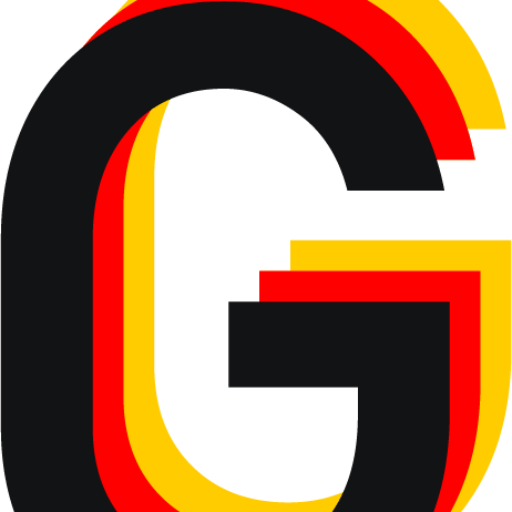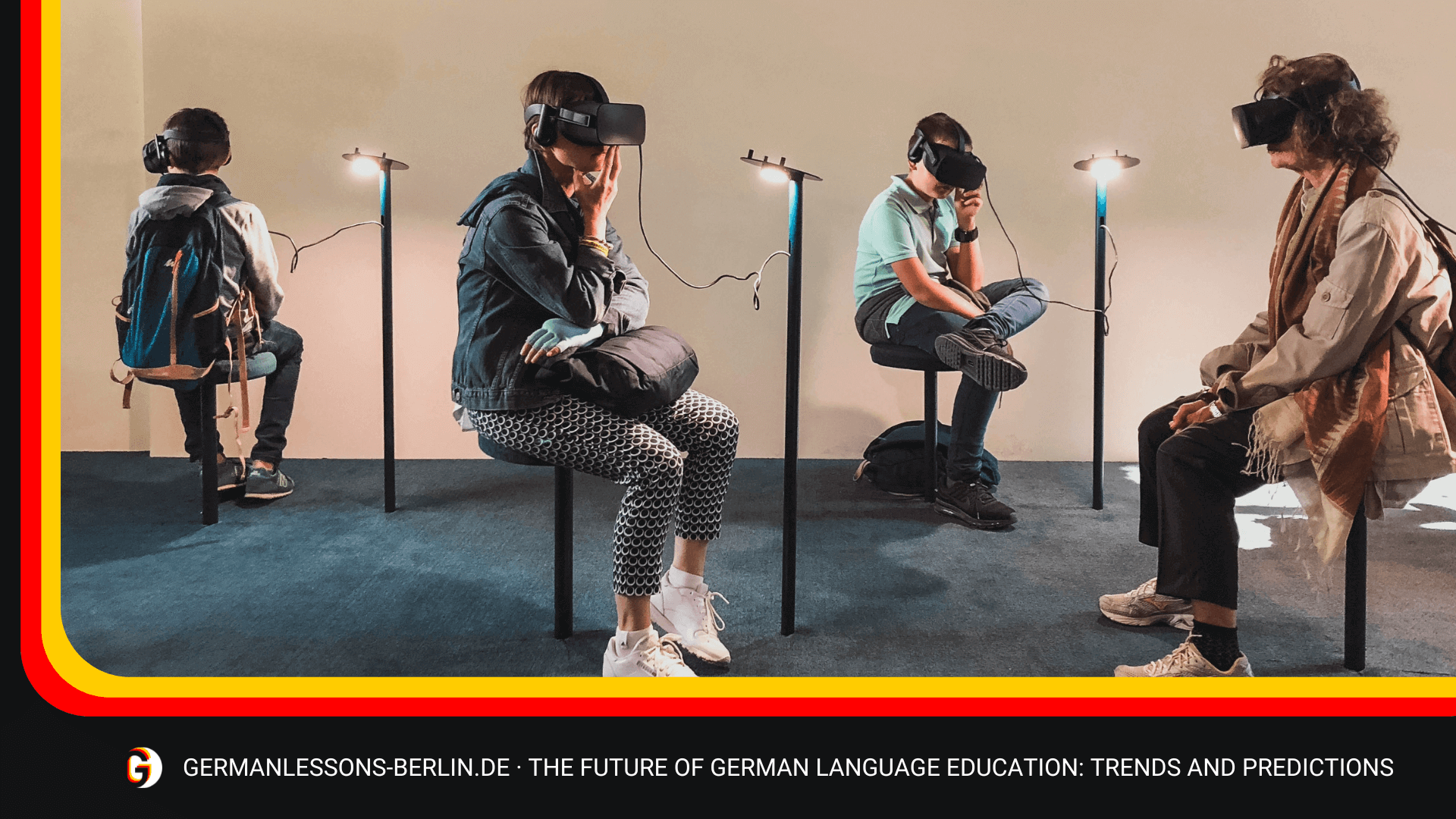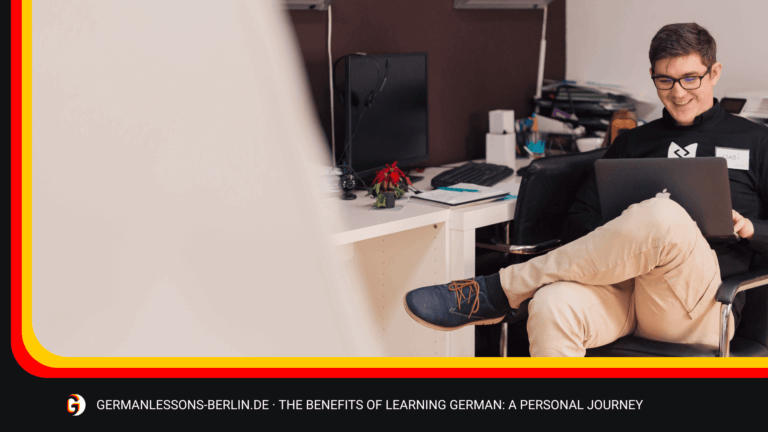The German language has long been a mainstay of the European education system, and its importance is growing in both educational institutions and everyday life. As technology advances, so too does our understanding of how to best teach and learn this powerful language. This article will explore current trends in German language education, as well as make predictions about what the future may hold for learning this important language.
With globalization on the rise, more people than ever before are looking to expand their linguistic capabilities by learning another language. For many people around the world, that language is German. Although English remains dominant in international communication, knowledge of German can open doors not just in Germany but also within various other countries across Europe where the majority or minority population speaks it. Consequently, there is an increased interest in studying German at all academic levels ranging from elementary school through university studies.
This article will investigate recent developments in teaching methods used with German students and analyze data on foreign student numbers enrolled in classes related to the German language. It will also look into emerging technologies such as artificial intelligence (AI) and virtual reality (VR) which have potential applications for classroom settings involving instruction related to German linguistics. Finally, predictions will be made concerning possible changes that could take place in the coming years due to these advancements in technology when applied to the instruction of the German language at different educational levels.
Table of Contents
Overview Of German Language Education
The pursuit of knowledge is a universal endeavor, and the acquisition of foreign language skills often serves as an integral part of this quest. German language education has seen a steady resurgence over recent years due to the global demand for proficiency in the Germanic tongue. In response to this growing interest, institutions have turned towards modern methods such as online learning and teaching technologies to provide students with unparalleled opportunities for mastering their desired language. With these advancements comes a heightened expectation among learners regarding what can be achieved when one embarks upon a journey into the world of German language education.
As globalization continues to bring us closer together, so too does our need for multilingual capabilities to increase. The significance of being able to communicate effectively across linguistic barriers has become ever more pressing; hence, there exists a greater awareness amongst individuals who are looking to equip themselves with the proper tools needed in order to navigate these waters successfully. Consequently, we find that those seeking instruction in German have widened considerably, including people from all walks of life – ranging from business professionals and academics alike – who wish to acquire fluency in this particular dialect.
In order for educators to meet the needs of their students satisfactorily, they must constantly adapt and develop new approaches that reflect current trends within the field. This includes providing access to various resources which will assist them in improving their understanding through interactive activities tailored specifically for learning purposes, along with relevant materials such as audio recordings or videos featuring native speakers engaging in typical conversations related to everyday living. By doing so, instructors can ensure that learners receive quality training designed around fulfilling their expectations concerning Germany’s rich cultural heritage while simultaneously developing their communicative prowess at an optimal level. Thus transitioning effortlessly into the next section about ‘Global Demand For German Language Skills.
Global Demand For German Language Skills
The global demand for German language skills has been increasing steadily over the past few years. It is estimated that by 2020, more than 400 million people worldwide will be studying or using some form of German language education. This growth in popularity can be attributed to several factors, including Germany’s economic success and political stability; its growing international presence; as well as its vibrant culture, and its rich history.
A major trend driving this increased interest in learning German is the emergence of online learning programs. These programs allow students from all parts of the world to access quality materials and instruction at an affordable price. Additionally, these platforms often provide personalized instruction, which allows learners to progress at their own pace. As such, many individuals who previously had limited access to traditional educational institutions are now able to learn German through these digital resources.
In response to this rising demand for German language education, universities around the world have begun offering a variety of courses, certificates, and degree programs related to the subject matter. In addition, organizations like Goethe-Institut have created extensive networks of teachers and libraries dedicated solely to educating students on topics related to the German language and literature. With so much available support, it seems clear that there is no lack of options when it comes to pursuing an education in this field.
As awareness about the value of having knowledge and proficiency in German continues to grow around the globe, we can expect that these trends will only continue into the future. The next step is determining just how popular online learning will become among today’s aspiring speakers of this ancient language.
Popularity Of Online Learning
The popularity of online German language education has been steadily increasing in recent years. Students have greater access to a variety of online German learning options, including courses, programs, and remote teaching. This is due to the rise of technology combined with its ability to make knowledge more accessible around the world.
The advantages of online German language education are numerous. Online classes can be taken from anywhere at any time, allowing students to learn on their own schedule without having to travel or take up residence in Germany itself. Additionally, many online German courses offer multimedia materials such as videos, podcasts, and interactive activities that help enhance student engagement while they practice speaking the language. Furthermore, some providers also offer support services such as tutoring or one-on-one consultations if needed.
In summary, the use of online platforms for teaching German is becoming increasingly popular because it provides flexibility, accessibility, and multimedia content that helps enhance the overall learning experience. The impact of technology on teaching German will likely continue to grow over time as new tools become available and traditional methods become obsolete.
Impact Of Technology On Teaching German
Teaching German in the digital age is like a ship navigating uncharted waters. Technology has drastically changed how educators approach teaching the language, leading to new trends and predictions for the future of German language education. Online learning platforms have made it possible to learn German from anywhere at any time, providing students with more accessible resources than ever before. This shift towards online instruction requires teachers to adapt their curriculum to fit within this new virtual landscape. As such, technology must be utilized strategically in order to maximize its potential as an effective tool for teaching German.
Cultural context also plays a large role in successful technology-based instruction of the German language. Educators need to consider cultural nuances when utilizing technological tools; otherwise, there can be negative repercussions on student engagement or comprehension. For example, some cultures may prefer more visual forms of communication, while others may prefer auditory methods. Additionally, each culture has its own style of etiquette, which should be taken into consideration when designing lesson plans that incorporate technology-driven activities.
Finally, knowledge of up-to-date technologies is essential for instructors who want to effectively teach German through these modern tools. Keeping up with the latest developments in tech can help ensure that lessons are engaging and relevant for all learners involved. With the right strategies and understanding of both cultural contexts and current advancements in technology, teachers can successfully integrate various types of tech into their curricula and provide valuable learning experiences for their students. By doing so, they will lay down solid foundations for the future success of german language education worldwide. The expectations placed upon students now depend heavily on having access to these technologies—further emphasizing the importance of being able to use them confidently and competently during instruction sessions.
Expectations Of Students
German language students today have expectations for their education that are significantly different from those of the past. With advances in educational technology, language learning has become more accessible and convenient than ever before. As a result, German language students want to learn quickly, efficiently, and with quality instruction. Online language learning platforms provide both convenience and flexibility while also allowing them access to materials at any time and virtually anywhere they choose.
This shift towards online learning has necessitated changes in traditional teaching models as well as an increase in the use of digital resources such as audio-visual aids, interactive activities, simulations, and other forms of multimedia applications. This trend is expected to continue into the future as educators seek ways to further engage learners by leveraging new technologies such as artificial intelligence (AI) and virtual reality (VR). Additionally, there is increasing demand for personalized learning experiences tailored to individual student needs, which will require innovative approaches to assessment methods.
The changing landscape of language education demands that teachers be prepared to not only meet but exceed these expectations by providing meaningful lessons that integrate technological tools while still maintaining high standards of teaching excellence. The next section will discuss how this changing role impacts teacher training programs and how institutions can best equip themselves to meet current trends in German language education.
Changing Role Of Teachers
The changing role of teachers in German language education is like the beating heart of a living organism. As technology and educational strategies advance, teachers are adapting to meet these new challenges by engaging in teacher training, professional development, and innovative teaching techniques.
Technology has become an integral part of language instruction. Teachers must be familiar with various types of software programs that help students learn vocabulary and pronunciation through interactive activities. Additionally, online platforms can provide opportunities for asynchronous learning, which allows students more time to practice their skills outside of class hours. The ability to use educational technology effectively is becoming increasingly important as schools look for ways to further engage learners.
Teachers also need to stay up-to-date on modern teaching practices such as differentiated instruction or project-based learning. Professional development courses offer educators the chance to improve their knowledge about both digital tools and instructional methods so they can better equip their students with the skills needed for success in a globalized world. With this knowledge, teachers have access to a variety of tools that enable them to create dynamic lessons tailored to different student needs and interests.
These changes require teachers to think critically about how best to foster meaningful learning experiences for their pupils while still meeting curricular objectives. Through careful planning and dedication, instructors can ensure that their students receive quality language instruction despite any challenges faced by institutions today.
Challenges Faced By Institutions
The changing role of teachers in German language education is an important factor when considering the future. As instructors strive to keep up with trends, it is imperative for institutions to consider the challenges they face as well. Institutions offering German language courses must address a range of issues, from teaching methods and resources available to support learners, to finding ways to better measure learning outcomes.
In terms of teaching methods, there has been increased emphasis on technology-driven instruction recently. This can involve digital tools such as online platforms, multimedia content, and interactive activities. While this approach may offer advantages, it also presents its own set of challenges for many german language institutions. For instance, a lack of access to or expertise in using modern technologies could hinder effective implementation. Furthermore, some students may find difficulty navigating new interfaces or software programs associated with these approaches.
Another challenge facing institutions involves measuring student progress and success in language learning. Traditional assessment techniques like written tests or oral exams can be helpful but often fail to capture more nuanced aspects of language proficiency that take into account cultural context and personal communication skills acquired over time through practice and experience. Developing meaningful evaluation criteria that are valid across contexts and reflect deeper levels of understanding would help improve teaching german by allowing educators to gain valuable insights into their students’ needs.
Given these institutional challenges related to teaching methods and evaluation tactics, strategies need to be established that enhance learning outcomes while addressing the various complexities involved in providing quality German language education today.
Strategies To Enhance Learning Outcomes
In this day and age, it seems that everyone wants to be a language expert; however, the task of mastering any foreign tongue is never an easy feat. For those looking to master German – one of Europe’s most widely spoken languages – the challenge can seem even more daunting. But fear not! With several innovative strategies employed by educators in Germany and beyond, successful learning outcomes are becoming increasingly achievable for learners of all levels.
To start, educators must ensure that the teaching environment is conducive to effective learning experiences. This means providing students with materials tailored to their individual needs as well as offering them ample opportunities for practice outside of classroom settings. Furthermore, integrating cultural context into instruction is essential for fostering true understanding of the language among learners. Incorporating real-world examples such as films or music also helps bring the language alive in interesting ways while stimulating student engagement.
Finally, it is important to provide students with feedback on a regular basis so they have insight into their progress and remain motivated throughout their coursework. By employing these strategies, teachers can help create an optimal environment where German learners can thrive and reach their full potential within the language. Onward then…to consider the importance of cultural context in teaching German!
The Importance Of Cultural Context In Teaching German
The integration of cultural context into German language education is essential for successful learning outcomes. Cultural understanding can help students develop a greater appreciation and respect for the country’s history, customs, and societal norms. This ultimately results in more effective communication with native speakers.
When teaching German culture to students, educators should utilize various educational strategies that incorporate both linguistic and cultural elements. Such tools as films, music, literature, and visual art can be used to provide insight into local customs and practices. By doing so, teachers are able to engage their students on an even deeper level than simply through verbal instruction alone.
In addition to providing a well-rounded education about Germany’s culture, incorporating such materials also provides several other benefits:
- Language Acquisition: Students will gain an enhanced vocabulary and improved grammar usage when exposed to authentic examples of German dialogue from these sources.
- Cross-Cultural Understanding: Being immersed in the language brings forth an increased awareness of different cultures, which allows learners to better comprehend their own values in comparison to those practiced abroad.
- Relevance & Engagement: Learning activities that involve culturally relevant topics create interest among students by connecting them directly with the material being discussed. This increases student engagement levels while simultaneously improving learning outcomes.
Incorporating cultural aspects into German language education promotes a comprehensive approach to language acquisition while at the same time fostering cross-cultural understanding among learners. The implications derived from this knowledge have far-reaching potential for how we educate future generations in the field of foreign languages; one that could lead us all on a journey towards global peace and mutual understanding between peoples of all nations around the world.
Implications For The Future
The cultural context of teaching German is integral to the language-learning process. The implications this has for the future of German language education are vast. As technology advances and globalization increases, educators must be prepared to meet these changes with new approaches to teaching German.
In order to prepare learners for success in a rapidly changing world, teachers need to stay current on trends in language learning and use them as part of their instruction. Language-learning trends such as online learning, mobile applications, social media integration, and interactive technologies have been gaining traction over recent years. These can all be used effectively when incorporated into German language classes at any level, from primary school through tertiary study. Online resources allow students to access materials from anywhere around the globe and learn at their own pace; mobile apps provide quick games or drills that reinforce material learned during class; social networks connect users who want help with specific topics while simultaneously raising motivation levels; and interactive technologies enable students to engage with content more deeply than ever before (e.g., virtual reality).
Technology also presents an opportunity for educators to create immersive experiences that capture learners’ attention by providing realistic situations in which they can practice speaking German authentically. By incorporating elements of culture throughout lessons – including music, film clips, folk tales, literature excerpts, etc.—educators can ensure that cultural context is not lost but rather enhanced within the classroom environment. Additionally, by introducing popular themes from contemporary Germany—such as sustainability initiatives or cultural artifacts like Berlin street art—teachers can challenge students’ perspectives while expanding their understanding of modern Germany too.
Educational trends are constantly evolving, so it is vital that teachers remain vigilant about keeping up-to-date regarding best practices in german-language-teaching techniques. Learning how to integrate technology into lesson plans without losing sight of traditional methods will give teachers the confidence needed to teach German successfully, both now and in the future. With careful consideration given towards integrating technology tools alongside maintaining cultural relevance within educational settings, there is potential for increased student engagement leading ultimately to better outcomes across the board in terms of language acquisition and knowledge acquisition overall.
Frequently Asked Questions
What Are The Different Ways To Learn German?
Learning German can be a rewarding experience, whether it is to prepare for an upcoming trip or to improve one’s career prospects. There are many different ways of learning the language, such as enrolling in german language classes, attending online courses, using self-study programs, and even apps. All these methods offer learners various options to acquire knowledge quickly and efficiently.
German language classes have been around for centuries and remain popular today due to their traditional approach that allows students to learn at their own pace in a supportive environment with face-to-face instruction from experienced teachers. Attending courses offline gives learners the opportunity to practice what they’ve learned while being surrounded by native speakers who can give them feedback on pronunciation and grammar accuracy. They also benefit from engaging in activities and exercises tailored toward improving their listening comprehension skills.
In addition, there are plenty of resources available online which allow people to learn German fast without having to leave home. Learners can access audio recordings of conversations between native speakers, watch videos about how words are used in context, and complete interactive quizzes that test their understanding of grammatical rules. Online tutors are another great resource for those looking for more personalized help when studying the language; they provide one-on-one guidance through video chat sessions over Skype or Zoom. With so many digital tools available, learning German has never been easier!
By taking advantage of both traditional classroom settings and modern technology, individuals interested in mastering the German language have numerous opportunities at their disposal that will enable them to achieve this goal effectively and quickly – regardless of where they live or what lifestyle they lead. Whether someone wants to learn german fast with self-study programs or take part in immersive language immersion experiences abroad – there is something out there for everyone!
How Can I Best Use Technology To Teach German?
The use of technology to teach German is an increasingly popular option for learners around the world. There are numerous digital tools and resources available that can be used to facilitate teaching, both online and in-person.
Technology has revolutionized language education by making it more accessible, efficient, and cost-effective. Online courses provide students with a convenient way to learn German without having to attend physical classes or spend money on textbooks. Furthermore, there are many websites and applications offering interactive activities such as games and quizzes which help reinforce learning concepts. Additionally, virtual tutoring platforms have been developed which allow for one-on-one instruction from experienced teachers.
To best utilize technology when teaching German, instructors should consider the following:
Developing meaningful lesson plans:
– Incorporate multimedia elements such as videos and audio recordings into lessons
– Utilize software programs like Quizlet to create flashcards or other interactive quizzes
– Integrate webinars or video conferencing calls for collaborative learning activities
Assessing progress regularly:
– Give frequent feedback to students on their performance
– Allow open discussions between students so they can share ideas and receive support from each other
– Use assessment tools like Plickers or Kahoot! To gauge comprehension levels
Encouraging communication through technology:
– Create group chat rooms where students can practice speaking German with each other in real time.
– Employ tools like Google Docs or Dropbox Paper for collaborative writing exercises
By leveraging modern technology tools specifically designed for learning German, educators will find themselves better equipped to offer high-quality training regardless of location or budget constraints. This increased access not only benefits teachers but also provides greater opportunities for those who seek an alternative path toward mastering this beautiful language.
How Can I Make the German Language Learning More Engaging?
The use of technology in teaching German can be a powerful tool for making language learning more engaging. To maximize the benefits of this approach, educators must employ various strategies to ensure that students remain engaged throughout their studies. This includes incorporating language learning games, interactive German lessons, and activities, as well as providing access to a variety of resources.
When using technology as an aid for teaching German, there are several approaches that may prove effective. Language learning games provide opportunities for learners to practice their knowledge while having fun at the same time. Additionally, interactive German lessons allow students to interact with the material in a real-time environment, allowing them to become further immersed in the language experience.
Furthermore, teachers should take advantage of online resources available such as:
Websites:
– Online grammar tutorials
– Interactive vocabulary flashcards
Apps:
– Audio/video recordings of native speakers
– Mobile quizzes and other tools for reinforcement
By utilizing these types of tools and resources effectively, educators can create dynamic and enjoyable experiences for their students when it comes to learning German. This not only encourages greater engagement from learners but also helps foster positive attitudes toward the language itself. It is essential, then that those who wish to teach German to make use of modern technologies that have been designed specifically for this purpose.
How Can I Ensure That My Students Learn German In The Most Effective Way?
When it comes to German language learning, ensuring that students learn in the most effective way is critical. To this end, teachers must be prepared with a variety of teaching strategies and techniques to ensure student proficiency in the language. The effectiveness of instruction depends on several factors, including:
– A focus on providing engaging activities for students;
– Involving students in active learning tasks;
– Utilizing modern technology to enhance instruction.
In order to make sure that these goals are met, and students gain real language proficiency, teachers should take into consideration relevant trends such as flipped classrooms or digital literacy initiatives. Flipped classrooms enable more focused one-on-one instruction time between teacher and student while also allowing them to interact with content outside of classroom walls. Additionally, incorporating digital tools can motivate learners by providing instant feedback, which encourages their achievements along the learning journey. Moreover, using multimedia elements such as videos or audio recordings within lessons helps keep pupils interested and engaged.
Overall, it is essential for educators to foster an environment conducive to student success when teaching German. By exploring different approaches like flipped classrooms or incorporating digital technologies into instruction, teachers can create memorable experiences for their students that will result in higher levels of fluency and confidence in the language. It’s up to us as instructors to develop meaningful strategies so our pupils receive the best education possible!
What Are The Best Strategies For Teaching German In A Multicultural Context?
As cultures blur and mix, teaching German in a multicultural context requires a different approach to language education. With creative strategies, educators can ensure their students learn German with the utmost efficacy. To understand how best to teach German today, it is important to consider the various approaches available for language learning.
Multicultural strategies open up greater opportunities for german learning by creating an inclusive environment where everyone feels welcome. By incorporating cultural elements into lessons, such as native music or art, teachers can provide students with an immersive experience that connects them more deeply with the language they are learning. Furthermore, recognizing regional dialects within Germany enables students to engage with another level of communication which further encourages fluency in speaking and writing.
In order to achieve true success in teaching German in a multicultural classroom setting, techniques must be tailored to each student’s needs and interests. For example, visual learners may benefit from using flashcards, while auditory learners could gain better results through audio recordings or role-playing activities. Additionally, providing extra support outside of class allows each student time to focus on areas that need improvement without being distracted by other factors. As technology advances at rapid rates, innovative tools such as augmented reality should also be considered when designing effective lesson plans for teaching German.
By taking these considerations into account and employing thoughtful strategies when developing curricula and choosing resources, educators can create an engaging atmosphere where all students will have ample opportunity to become proficient speakers of the German language.
Conclusion
The German language has been a staple of education for centuries, but technological advances have made it easier to learn than ever before. As such, the future of German language education is bright and promising as educators continue to explore new ways to make learning more engaging, accessible, and effective.
Technological advancements allow teachers to easily use online platforms to teach their students in real-time and create interactive lessons that help them stay engaged with the material. Furthermore, bilingual resources can be used in multicultural classes to ensure that each student receives an adequate understanding of the language regardless of their cultural background. Lastly, strategies such as gamification and adaptive learning systems can be employed to tailor instruction based on individual needs and preferences.
In conclusion, while there are no guarantees when it comes to teaching any subject matter, this new technology provides educators with unprecedented tools for making the German language learning both enjoyable and educational. It may be ironic that cutting-edge technology is being used to study a language rooted in history; however, this only serves as evidence of how far we have come over time – and what potential lies ahead for generations who will soon reap its benefits.








